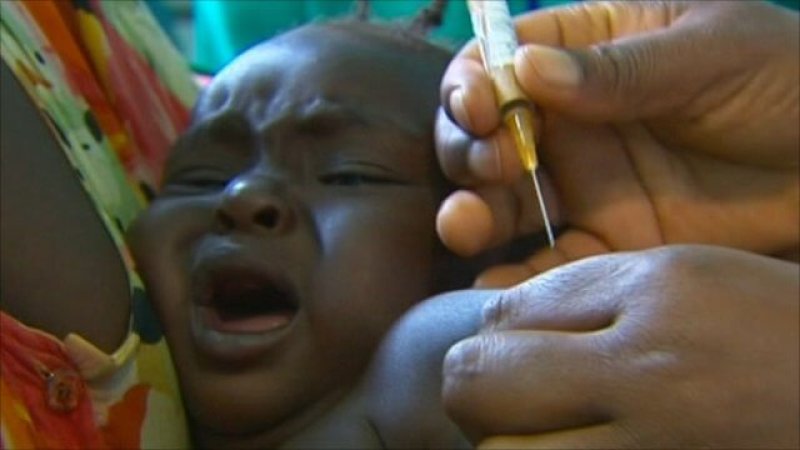Malaria is one of the Great Diseases. This mosquito-borne illness killed some 627,000 people in 2012, most of them children in sub-Saharan Africa. Efforts in the last decade have cut mortality rates for the disease by an impressive 45 percent, but malaria continues to be a massive public health burden wherever it persists.
A team of scientists at Seattle BioMed is making progress on developing a genetically engineered version of the malaria parasite Plasmodium falciparum that could act as a vaccine.
The logic behind this approach is rooted in the origins of vaccines, which trace to 1,000 C.E., when the Chinese used scabs and pus from smallpox sufferers to infect healthy people. It may sound insane, but these artificially induced infections were often less severe than those that occurred naturally, and—this is key—once these people had survived their induced infection, they were immune.
Our immune system remembers. Indeed its entire function is based on its ability to recognize pathogens. It has a strong intrinsic ability to recognize intruders and attack them, but the multitude of potential invaders—bacteria, viruses, parasites—have ways to circumvent our defenses. Intruders get in, get established and we get sick while the immune system mounts a proper defense.
Thankfully, the immune system operates on a strict “fool me once” policy, and this is what the Seattle BioMed team is counting on. If you catch this year’s most common flu strain, your immune system will be primed to push back if that particular strain tries try to re-infect you later.
In theory, the same is true of malaria. Malaria is a single-celled parasite, not a bacterium or a virus, but the immune system fights it the same way it fights everything else. If we could train the immune system to recognize malaria and take it out before it gets established in the body, we could confer immunity. We could have a vaccine for malaria.
Unfortunately, two things have made efforts to develop a malaria vaccine largely fruitless so far. First, the parasite itself comes in a variety of flavors—there are several species of parasite in the Plasmodium genus that cause the disease, and exposure to one does not necessarily confer resistance to another (though it can confer at least partial resistance.). Plasmodium falciparum is the most deadly species, and the focus of the BioMed team’s efforts.
Second, this is an extremely cunning and stubborn parasite. Medicines that effectively kill the parasite are few (you can count them on one hand) and many of them come with nasty side-effects. The parasite develops resistance quickly, further limiting the selection of anti-malarial drugs usable in any given location.
Even in a best-case scenario with good treatment and effective drugs, malaria infections may persist. Plasmodium can hide in the red blood cells of its host, safe from the immune system and medications, only to stage a resurgence weeks, months, even years after initial infection. Patients end up the real losers in a cyclical war between their immune systems and the parasite.
The BioMed team’s plan is to intervene before the cycle can get started in the first place. Any incipient malaria infection has a brief window of vulnerability, right after a mosquito has delivered the parasite to the blood stream but before the parasite has taken refuge in red blood cells and begun to reproduce. The BioMed team would like that Plasmodium vanguard to find itself in a bloodstream already rife with antigens waiting to tag the parasite for termination.
The Plasmodium parasite is particularly difficult to work with, genetically, and this latest announcement represents a culmination of much genetic tinkering to figure out exactly which genes needed to be knocked out in Plasmodium flaciparum to render it innocuous yet inoculating. It took a “triple punch,” knocking out three key genes associated with pathogenicity, to render the parasite harmless. They tested their genetically attenuated parasite (GAP) in mice with human-equivalent red blood cells and livers. Even at high dosages, their modified parasite did not develop into an infection.
Having demonstrated the safety of their GAP in mice, they hope to move on to clinical trials soon to see if their vaccination process works for humans.
In the long history of the War on Malaria, the best approach has typically been to avoid getting to the point where it’s necessary to fight the parasite; by that time the battle might already be lost. The best interventions take place before the fateful mosquito bite. Simple mosquito nets can make a staggering difference in overall malaria rates. Broader population control plans can also help, whether they involve pesticides, land-use changes, or perhaps genetically engineered mosquito sleeper agents (also check out Gene-ius contributor Layla Katiraee’s post on using modified mosquitoes to combat dengue fever.)
These techniques have taken us far and saved millions of lives, and I doubt they’ll be replaced by a vaccine soon. Yet a vaccine might be just the tool we need to add malaria to the list of diseases like smallpox and polio that we’ve effectively eradicated. In both cases, widely available and highly protective vaccines were the hammer used to nail the coffin on these widespread diseases. Short of an all-out eradication of all of the vector species of mosquitoes—a proposition rife with the potential for collateral damage and logistical implausibility—mosquitoes will be ready to delivers their payload of Plasmodium into some unprotected child’s blood stream.
Unless we come up with a new solution. Someday, with some help from a genetically engineered vaccine, the parasite could be in for a nasty surprise: that child’s immune system will be ready and waiting.
Kenrick Vezina is a freelance science writer, educator, and naturalist based in the Greater Boston Area.
Additional Resources:
- “GM mosquitoes a ‘quantum leap’ towards tackling malaria,” Adam Vaughan | Guardian
- “Genetic ‘barcode’ for malaria could help contain outbreaks,” Medical Xpress
- “How to Beat Malaria, Once and for All,” Francois H. Nosten | New York Times































